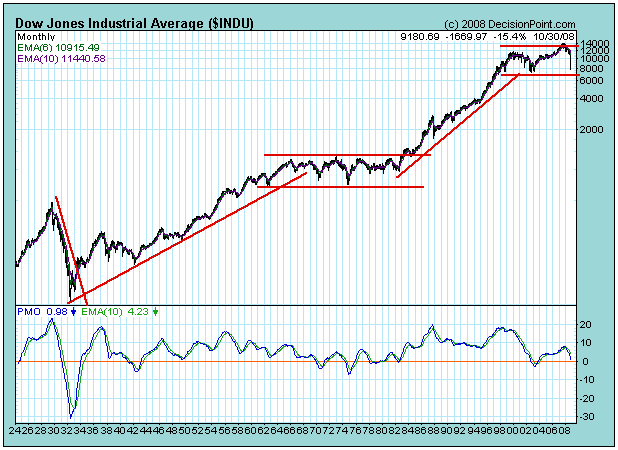When the market changes, we must change our tactics, strategies, and analysis techniques to accommodate the new market conditions. This is not a new idea, but it is one that is not very widely recognized, particularly when applied to the long-term. In recent writings I have emphasized that we are in a bear market, and that we must play by bear market rules. Overbought conditions will usually signal a price tops, and oversold conditions can often see prices slip lower to even more oversold conditions. When making these comments, my focus has been on the cyclical bull and bear markets. What I want to address in this article are the secular forces of which we must be aware.
On the chart below I have identified the five secular trends that have occurred in the last 80-plus years. First is the 1929-1932 Bear Market, which, although it was short, saw the market decline 90%. Next was a secular bull market that lasted from 1932 to 1966, which overlaps with the consolidation of the 1960s an 1970s. In the early 1980s another secular bull market began which peaked in 2000 (basis the S&P 500). Finally, we seem to have entered another consolidation phase that could last another 10 to 15 years.

I began my market studies in the early 1980s, before the big bull market took off, and I learned from the guys who learned all they knew from the market action of the 1960s and 1970s. Applying those rules to the new bull market was confusing, frustrating, and unprofitable. While I didn't participate in those markets, it is easy to imagine the bewilderment of those who, educated in the bull market of the 1920s, took the elevator all the way down to the basement starting in 1929.
The long bull market after the 1932 bottom was missed by most of those traumatized by the crash, but it trained a whole new group of analysts who learned that the market always goes up . . . until everything they knew was proven wrong by a 20-year consolidation. Finally, the battle cry of the 1980s and 1990s bull, "this time it's different," was learned well by those who ultimately ate the 50% decline of 2000-2002.
Unfortunately, it takes time to unlearn the lessons of the heady 1980s and 1990s, and we can still observe people using bogus valuation models that only work in bull markets. We still see people trying to pick bottoms, and we still see people who think that a stock is under valued because it is down 70%. By the time this current secular market phase is over, people will have learned all new rules, that will not apply to the next 20 years.
Whether or not I have correctly identified the current secular market phase as a consolidation remains to be seen, but I am certain that we are no longer operating on the rules of the last secular bull market.
